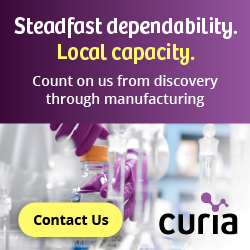Zevra Therapeutics Announces Interim Data From Phase 2 Clinical Trial of KP1077 for Idiopathic Hypersomnia
Zevra Therapeutics, Inc. recently announced interim data from the open-label dose titration phase of the Phase 2 clinical trial evaluating KP1077 in patients with idiopathic hypersomnia (IH). The data provide valuable information on the primary endpoint of the trial, which is the safety and tolerability of KP1077 in patients with IH, as well as insights related to the effective dose range and regimen. Topline data from the completed trial are expected in the first half of 2024 after all patients have completed the double-blind withdrawal phase. The combined open-label interim and upcoming topline data are expected to also provide information related to a number of secondary and exploratory endpoints, including excessive daytime sleepiness, sleep inertia, and brain fog.
“The open-label data yielded key insights for the design of the Phase 3 trial and potential unique benefits of KP1077 as a treatment for IH, if approved,” said Rene Braeckman, PhD, Senior Vice President of Clinical Development. “The interim data from the open-label portion of this trial demonstrate that KP1077 is well-tolerated at all dose levels and both dosing regimens with adverse events that are typical for stimulants and are mostly mild in severity. These results are consistent with data from our previous Phase 1 trial studying serdexmethylphenidate (SDX), which is our prodrug of d-methylphenidate and the sole active pharmaceutical ingredient in KP1077, and indicating no greater cardiovascular safety risk despite higher overall exposure levels when compared to both immediate and long-acting methylphenidate products currently used off-label for the treatment of IH. We believe KP1077, if approved, could provide a differentiated treatment option for patients underserved by currently available therapies.”
The interim data related to the secondary and exploratory endpoints showed marked improvements in patient-reported assessments of key IH symptoms from the open-label titration phase, including excessive daytime sleepiness, sleep inertia, and brain fog. The improvements in symptoms were similar after both once-per-day dosing of KP1077 (in the evening, just before bedtime), and twice-per-day dosing (half the daily dose after awakening in the morning and half the daily dose just before bedtime). The results from the completed Phase 2 trial are expected to inform the final design of the anticipated Phase 3 trial in IH, which is expected to be initiated by the end of 2024.
The Phase 2 clinical trial is a double-blind, placebo-controlled, randomized-withdrawal, dose-optimizing, multi-center study evaluating the efficacy and safety of KP1077 for the treatment of IH. Zevra expects to enroll approximately 48 adult patients with IH in more than 30 centers in the US. Part 1 of the trial will consist of a five-week open-label titration phase during which patients will be optimized to one of four doses of SDX (80, 160, 240, or 320 mg/day). Part 2 of the trial will entail a two-week randomized, double-blind, withdrawal phase, during which two-thirds of the trial participants will continue to receive their optimized dose while the remaining one-third will receive placebo. Participants will be further assigned into two evenly divided cohorts. The first cohort will receive a single daily dose just before bedtime, and the second cohort will receive half the daily dose shortly after awakening and half the daily dose prior to bedtime.
The primary endpoint is the safety and tolerability of SDX. The major secondary efficacy endpoint is the change in Epworth Sleepiness Scale (ESS) total score. Additional exploratory endpoints include the Patient Global Impression of Severity (PGI-S), the Clinical Global Impression of Severity (CGI-S), change in total score on the Idiopathic Hypersomnia Severity Scale (IHSS), and a new scale to assess the symptoms and severity of “Brain Fog.”
Idiopathic hypersomnia (IH) is a rare sleep disorder characterized by excessive daytime sleepiness. Patients with IH experience daytime lapses into sleep, or an irrepressible need to sleep that persists even with adequate or prolonged nighttime sleep. Additionally, those with IH have extreme difficulty waking, otherwise known as “sleep inertia,” severe “brain fog”, and often fall asleep unintentionally or at inappropriate times. These symptoms of IH often lead to further, even more debilitating problems such as memory lapses, difficulty maintaining focus, and depression.
It is estimated, based on claims data, that approximately 37,000 patients in the United States are currently diagnosed with IH treatment, although the total patient population may be much larger due to some patients who have not yet been diagnosed, have been misdiagnosed, or are not currently seeking treatment.
Serdexmethylphenidate (SDX) is Zevra’s proprietary prodrug of d-methylphenidate (d-MPH) and the sole active pharmaceutical ingredient (API) in KP1077, Zevra’s lead clinical candidate being developed as a treatment for idiopathic hypersomnia (IH) and narcolepsy. Zevra is currently enrolling a multicenter, dose-optimizing, double-blind, placebo-controlled, randomized-withdrawal Phase 2 clinical trial to evaluate safety and efficacy of KP1077 as a treatment for IH. For more information regarding the Phase 2 trial, visit www.clinicaltrials.gov.
KP1077 has been granted Orphan Drug Designation by the US FDA for the treatment of IH, and the US Drug Enforcement Agency (DEA) has classified SDX, the sole API in KP1077, as a Schedule IV controlled substance based on evidence suggesting SDX has a lower potential for abuse when compared to d-MPH, a Schedule II controlled substance.
Zevra Therapeutics is a rare disease company melding science, data, and patient need to create transformational therapies for diseases with limited or no treatment options. With unique, data-driven clinical, regulatory, and commercialization strategies, the Company is overcoming complex drug development challenges to bring much-needed therapies to patients. With both regulatory and clinical stage product candidates, the Company is building its commercial capability to make new therapies available to the rare disease community.
Total Page Views: 916













